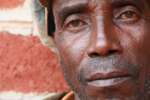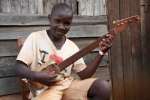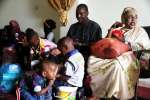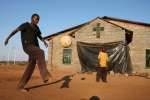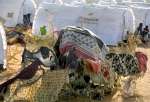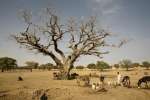- Text size
 |
|  |
|  |
| 
- Français
More refugees flee Burundi ahead of elections - UNHCR
News Stories, 29 June 2015
NYARUGUSU REFUGEE CAMP, Tanzania, June 29, (UNHCR) – More than 6,000 refugees fleeing Burundi have crossed over into Tanzania in the last three days, taking to over 66,000 the total number of refugees who have arrived from its central African neighbour since May 1, according to the UN refugee agency.
UNHCR reports that on Sunday (June 28) alone it registered over 3,000 refugees, 1,000 of them at the Manyovu border point.
Many have arrived from neighbouring Makamba province, but others have come from other areas including the capital, Bujumbura fearful that parliamentary elections on Monday (June 29) could trigger more political unrest and violence.
"We had hope, we thought that diplomatic discussions would bring us peaceful elections but the situation is not getting better" said Nimbuna, a 34-year-old refugee, from Nyanza Lac, southern Burundi.
In Nyarugusu's Charité reception centre, one of many locations where newly-arrived refugees are hosted, a dozen men stand in line to receive hot food. All of them arrived overnight. They look exhausted and hungry. They have little or no baggage.
"To reach the border I took side roads and travelled by night," one of the new arrivals, Leonard, 32, said. He reached the Kilelema border point late on Sunday.
From there refugees are assisted with transportation to Nyarugusu camp, some three hours away. "There were many people in Kilelema, and many more came after me," Leonard added.
The first wave of refugees from Burundi arrived in Kagunga, a small fishing village on the Tanzanian side of Lake Tanganyika in early May. The influx of over 40,000 people, largely women and children living in congested conditions in the village, led to an outbreak of cholera. A humanitarian response, led by UNHCR, provided drinking water, improved sanitation facilities and established a cholera treatment centre, while evacuating people by boat. The situation was quickly stabilized.
Today, over 66,000 Burundians are accommodated in Nyarugusu camp near Kasulu. While most refugees are transported from the border points to the camp, many also arrive on their own, some on foot. The majority of refugees are women and children. However men and young male students have also begun to arrive citing increased fears of targeted harassment.
"In Burundi, main roads are blocked and passengers suspected of heading for the borders are forced off buses; the militia take away their luggage and some have been arrested," Leonard added. Other refugees tell similar stories.
Burundi's political turmoil started in early April when President Pierre Nkurunziza said he would stand for a third term, a decision denounced as unconstitutional by the opposition. People fleeing the country fear more violence will follow the parliamentary elections, boycotted by the opposition.
UNHCR, in support of the government, is leading the humanitarian response to assist refugees in Tanzania. In Nyarugusu camp UNHCR and partners provide shelter and have established facilities for access to clean drinking water, health and sanitation facilities. A cholera treatment centre in the camp proactively seeks out suspected cases of cholera and health and hygiene promoters are trained to disseminate key messages to the population.
"I walked a whole day much of it during the dark; I brought no luggage," Leonard said pointing to a small grey bundle he clutches in his hands. "I was lucky it was Sunday and there are many people walking to church. It was difficult to tell who was going where."
UNHCR and partners provide refugees with essential household relief items such as blankets, plastic sheets, buckets, jerry cans, sleeping mats, kitchen sets, soap and mosquito nets. Hot food is provided to newly arrived refugees pending distribution of a monthly ration of grains, pulses, salt and oil.
The UN refugee agency, in collaboration with the government and humanitarian partners, has prepositioned relief items and is preparing to respond to the needs of an additional influx in the next weeks.
By M. Farman-Farmaian, Nyarugusu, Tanzania


